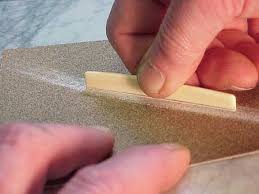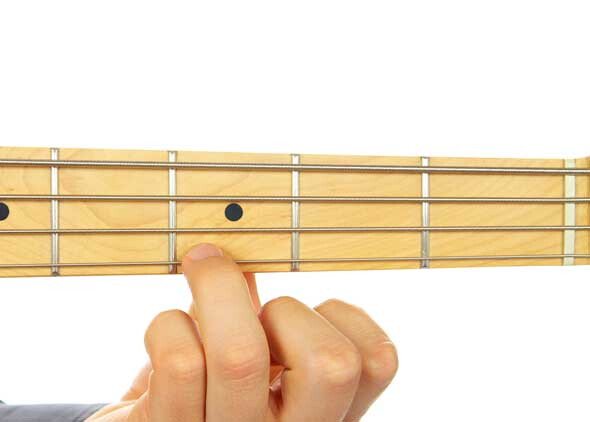Sorry to hear that.
I have a similar issue with the pinky on my fretting hand.
At least it’s not your fretting hand ![]()
![]() Thanks for the advice!
Thanks for the advice!
As an update I’ve been feeling way less pain even running scales in the lower frets - I think I was overpracticing as a beginner and squeezing because I was physically tired from that. Still notice my grip being a bit too tight sometimes but trying to focus on it as you said! And a setup will be in the works soon - waiting to find a good time where I’m not jamming with friends and when the shop isn’t backed up ![]()
Sooner or later you are going to want to do, or check, the setup yourself. There is a ton of advice here on the forum on how to do this and it really is not that difficult to do on a bass or electric guitar. You also do not need to invest in a ton of expensive tools. Changing your own strings is a good first place to start. IMHO
Also be aware that sometimes when putting your instrument in for a setup it ends up in worse condition than before. A lot of people here on the forum can attest to that fact.
Just be glad you do not need to adjust the action on an acoustic guitar bridge. ![]()
![]()
![]()
I agree, now’s a good time to learn to do it for yourself. That I can do it on a bass is an attestation on how easy it is. Lots of videos on this forum how to do it.
- Loosen the strings
- Remove the bridge saddle
- Place the bridge saddle on a flat surface with a piece of sandpaper on it (120 to 240 grit)
- Carefully sand the bottom of the bridge making sure you’re removing an even amount.
- Insert bridge saddle back into slot and retune
- Check the action.
- Repeat if necessary to continue to lower

Thank you for the list of procedures.
I am more than aware of the method for doing this but my point, to beginners, was that it is a lot more involved on an acoustic than on a bass or electric guitar where the adjustments can be done without removing the strings by just turning screws on the bridge.
Your step 4 is the one to pay particular attention to for acoustiics. Like adjusting the truss rod to adjust the neck relief it just has to be done a bit at a time or else you will need to replace the bridge saddle. Sure you can add shims if you take off too much material but most acoustics with electronics have under saddle piezo pick ups and shims can affect their performance.
Then after action is adjusted there is string intonation to consider. ![]()
![]()
![]()
Again, on electric and bass guitars this is usually adjusted with screws in the bridge assembly.
I noticed the saddle in the picture you provided is of the intonated variety.
One thing I have never seen is a discussion on how you would adjust an intonated saddle on an acoustic guitar if required. And what about adjusting a non intonated saddle?
Again, it is so much easier to adjust the action and intonation on an electric or bass guitar than on an acoustic and is not something beginners should be afraid to adjust themselves
Yeah I guess my point Percy is that we shouldn’t as musicians be afraid of working on our own instruments.
You don’t have to work in NASA’s Jet Propulsion Lab to adjust the relief on a neck.
The internet provides a plethora of fantastic resources to do your own setups / work.
I’m going through the B2B course and have been practicing Billie Jean for the past few days (I’ve gone to the lessons following it but just practice this pattern for 20 mins a day or so).
My main issue is buzzing when transitioning from note to note - so the release of the fret while moving to the next fret. Should I
-
Play the first note
-
Mute the string with my plucking hand while continuing to hold the fret
-
Release played fret and proceed to fret the next note.
-
Pluck appropriate string and play the correct note.
-
Repeat steps 2-4.
Sorry if this is a confusing ask but I think my buzzing issue arises from releasing the fret without muting the string with my plucking hand OR maybe even releasing the fret improperly.
Thank you for any advice and feedback.
Thank you!
Hm, this is indeed a bit hard to understand what exactly is going on… if you have a chance to videotape yourself when playing, this might help.
But, let’s assume the buzzing is only because of your technique, then the classic advice would be: play it suuuuuuuuper slow and deliberate and try to understand (for yourself) exactly what it is you are doing, where buzzing might occur and how you could improve your approach. Slow and deliberate is very important before you then - again slowly or gradually - go up in tempo.
Another advice: playing the same pattern for 20 minutes (each day) without having identified the cause of your buzzing is not going to help you (much/at all). You might as well take a break and get back to Billie in a few days or weeks. Stepping away from a tough lick for a bit and re-visiting it later is often doing wonders.
But, try the slow and deliberate approach first ![]()
https://www.youtube.com/watch?v=ndLXmQKK-JQ - sorry for it being quiet, iPad microphones aren’t that great apparently. I didn’t really buzz until about 35ish seconds in but I started to go a lot slower like you mentioned. And I think I’m just not pressing the frets hard enough when I go faster. I really just need to slow down more. I had the same issue when I began drumming ![]() .
.
I think you are getting somewhere already - perhaps do it even slower to begin with. I know you’ll think “this is ridiculously slow”, but then you are about there ![]()
One thing I noticed is that you seem to be fretting right on top of the fret. It’s good to be close to the fret, but you shouldn’t be on top of it. That’s not a very “stable” place to fret!

Also:
It shouldn’t have to come down to pressing hard. You’d be amazed with how little force you can get away with before some buzzing starts to creep in. Fretting slowly (in the start) also helps in figuring this out.
So, put your fingers down right behind the frets (but not ON the frets), get a feel for the pressure/force needed and slowly work your way up from a really slow tempo.
You got this!
PS: as you get more comfortable, try to relax your fretting hand much more - it looks tense, and you probably don’t need to be as “claw-like” in your hand posture as you are now ![]() Move the thumb a bit further down onto the middle of the backside of the neck (hope this makes sense). This should help “straighten” especially your index finger a little bit and make it easier to hit the right spot just behind the fret.
Move the thumb a bit further down onto the middle of the backside of the neck (hope this makes sense). This should help “straighten” especially your index finger a little bit and make it easier to hit the right spot just behind the fret.
Thank you very much for the thoroughness of your reply. It helps a ton and means a lot! Relaxing my hands is definitely something I will work on too.
Im mostly strugling (currently) is a certain woman what i think she is. Im also running out of beer and its just 10pm but cant get more unless i walk 2km (which is not actually much, but i feel lazy) to get more and mostlikely end up singing karaoke which im not good at.
![]()
![]()
We’ve all been there, @Ek_Bass, in one way or another… tomorrow is a new day!
And we keep on staying there ![]()
I agree with what @joergkutter said about how little pressure you actually need, assuming your action and neck relief are setup properly.
I use a strap sitting or standing and can fret notes without putting my thumb on the back of the neck at all. I do not play like that but it proves how little pressure you need to fret a string and get a clean note. ![]()
Super nice bass you have, that had to be said, too! ![]()
I’m currently a bit strapped for time, so I’m struggling to practice in a structured way and set goals - there’s more pressing stuff going on! But the slapping is coming together slowly.
Musically, I’m struggling with singing in the pop choir: at the extreme ends, it feels like my voice is too “breathy”, or has (in car engine terms) blow-by. As if some air goes past even though I don’t want it to.
Cheers,
Antonio
PS: Oh, and I had a chat with an attractive lady at the sports meet up and felt sooo small after hearing that she 1. runs marathons, 2. rides long-distance and competitive road cycling, 3. is a dentist specialist, 4. plays jazz piano, and 5. has tons of friends. Basically all my hobbies on overdrive. How do people do all that stuff! ![]()
She’s lying to try and impress you in the hope that you will ask her out. Happened a lot to me when I was in my 20s. ![]()

